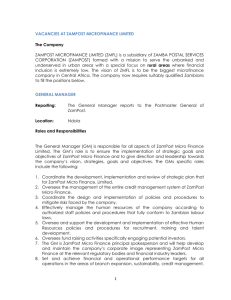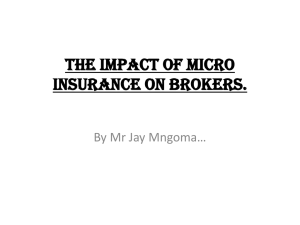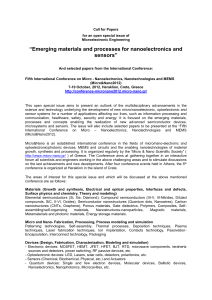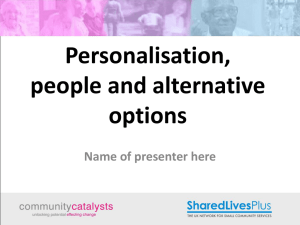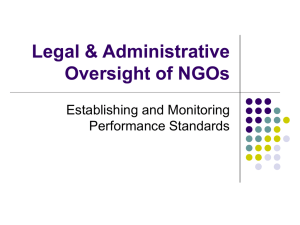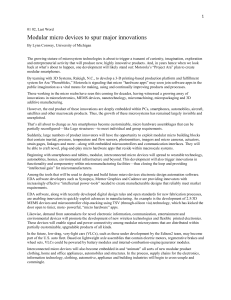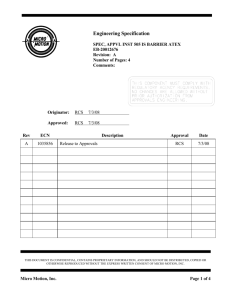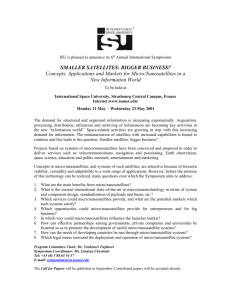Session VII - Rural Marketing
advertisement
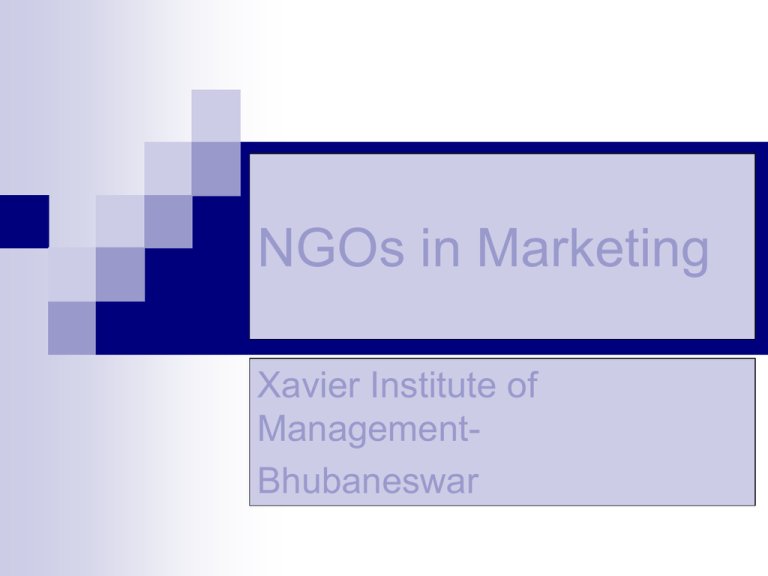
NGOs in Marketing Xavier Institute of ManagementBhubaneswar “ NGO Marketing” A confusing topic with conflicting connotations Non- Profit – Fair Trade – Producer Empowerment Diverse legal forms – aims & objectives – approaches Government sponsored – PPPs- Section 25 companies- Multi lateral agency promoted- Companies Complex marketing challenges & issues Variety of options – interventions – strategies Few successes, many failures for IGPs NGO Marketing Paradigms Organisation Development Approach •Service Market Development Approach provider- One or all •NGO as a facilitator marketing operations •Works to develop the market & promote •No encouragement for competition competition & market •Sustainable if it succeeds in market development development •Works for a specific target •Needs grants or outside subsidy group •Difficult to run on commercial principles •Unsustainable unless run on • Example: IDE commercial principles • Example: BAIF OD Approach: Jaipur Rugs Foundation Source: Jaipur Rugs Foundation Webpage Continued Micro Markets Approach Work with local markets, local skills and local products Analysis of haats and other weekly markets Microfinance Mart to micro enterprise through micro- planning 3 M Model Example: Support for marketing under the aegis of WORLP in Orissa 3 M Approach – MART Microfinance First input required to start income generating activity SHGs already in existence and functioning systematically Possible for a group member for starting a micro enterprise Micro markets Micro markets are perennial or periodic markets Local markets are important for poor women entrepreneurs Better access and control vis-a –vis distant town and city markets Micro planning To assess the local market demand pattern through surveys of local haats and village shops Local resources available such as raw materials, infrastructure, skills & support services Cont’d Source: Presentation by K P Mishra (Mart), XIMB -2004 NGO Marketing Issues Issue ( Indicative) Small size & low value goods and services Reasons( Indicative) Poor access to human, financial capital(1) Effect ( Indicative) Stunted growth of enterprise (4) Offering & market (2) -Leading to poor preference mismatch market scoping & research process “ Marketing myopia” (5) Lack of market access For inputs & outputs Institutional, logistical and technological barriers(3) Poor price realisation, distress sale in the case of perishable commodities ( 6) Information asymmetry (3) & (1) Inability to exploit opportunities (7) Continued Non – Profit Objectives Connected to Vision Mission & Goals (8) Resistance of staff (9) & fear of change Risk Aversion Programmes based on grants, application of own/ self generated funds low (10) (7) & Enterprises don’t have independent decision making powers Multiplicity of goals Programmes dictated by donor priorities (11) (4) Discomfort with commercial partners (8), (9) & (11) (4), (5) & (7) Unique Complexities in NGO marketing Solving Issues Comprehensive SWOT Beneficiary (Client)- Business matching Freeing the entrepreneur – Very often neglected issue Kudumbashree – SIDBI RIP & Rajiv Gandhi Udyami Mitra Scheme are cases in point Experience of Udyog Vikas Group or individual approaches Market efficiency criteria Vs Community benefit criteria Product- Market Options Products Present Markets New Markets Present Products Market Penetration Market Development New Products Product Development Diversification Adaptation of Ansoff’s Product – Market Grid Identification of Product – Market Options & Product – Market fit vital for success Cont’d Market Dimensions of Competition ( Indicative) Price Promotion Product Distribution Micro Rural SemiUrban Urban Adapted from Dr. L K Vaswani, IRMA – 2005 Market Resistanc e Policies Conclusion Map rational & emotional value chains Identify opportunities presented by the value chain analysis Decide on the approach & develop capacities after SWOT analysis Map present position of the target group in the value chain and attempt one jump at a time Marketing requires appropriate & separate organizational structure Plan for viability from day one Facilitation & service provision may cause conflict of roles and interests Adapted from Prof. D N Rao, XIMB 2004 Close of Session Thank You
